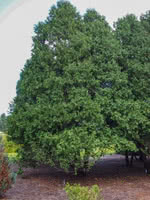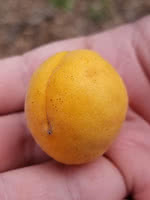Mon-Fri 9am - 5pm Mountain time
Eastern White Cedar (Arborvitae) vs Manchurian Apricot
Thuja occidentalis
Prunus armeniaca var. mandshurica
COMING SOON
(new stock expected: fall of 2025)
NOT AVAILABLE THIS SEASON - MIGHT RETURN
Eastern White Cedar is a slender growing conifer often used as a decorative tree or a hedge. This tree is an effective privacy screen even in winter and a great long term solution to urban crowding or a drab yard.
Manchurian Apricot is a winter-hardy relative of the native plum. This tree can stand some drought, but will not handle standing water or saturated moist soils. It can be used in shelterbelts, hedges, or as an ornamental. Manchurian Apricot will also attract songbirds, rabbits, and other rodents if left uncontrolled.
This tree will produce fruit once it reaches maturity at between two and five years old. Other famous cultivars of Manchurian Apricot include Scout Apricot, Moongold, and many more.

